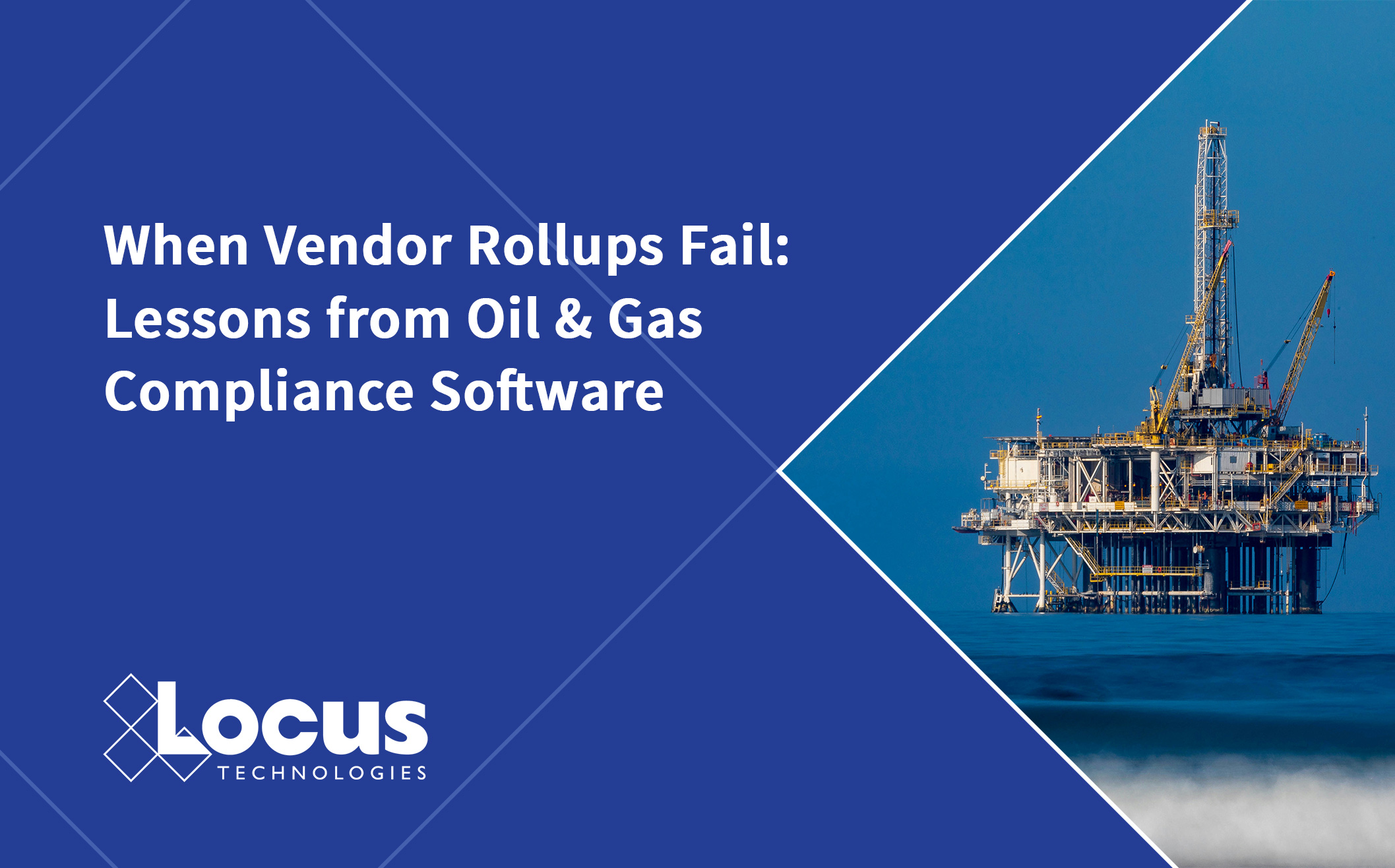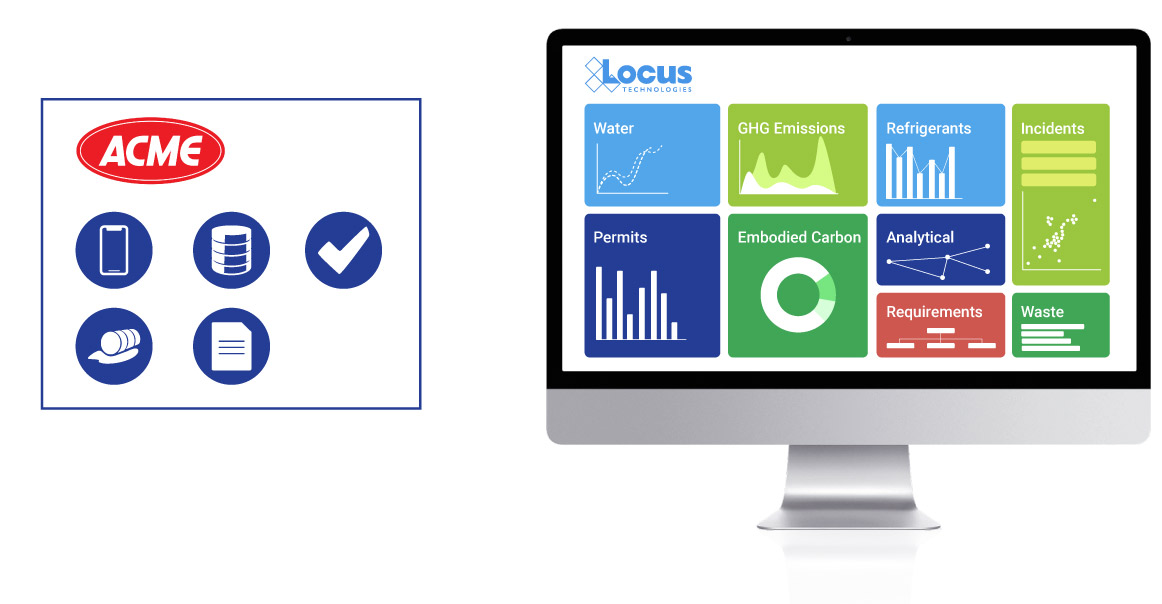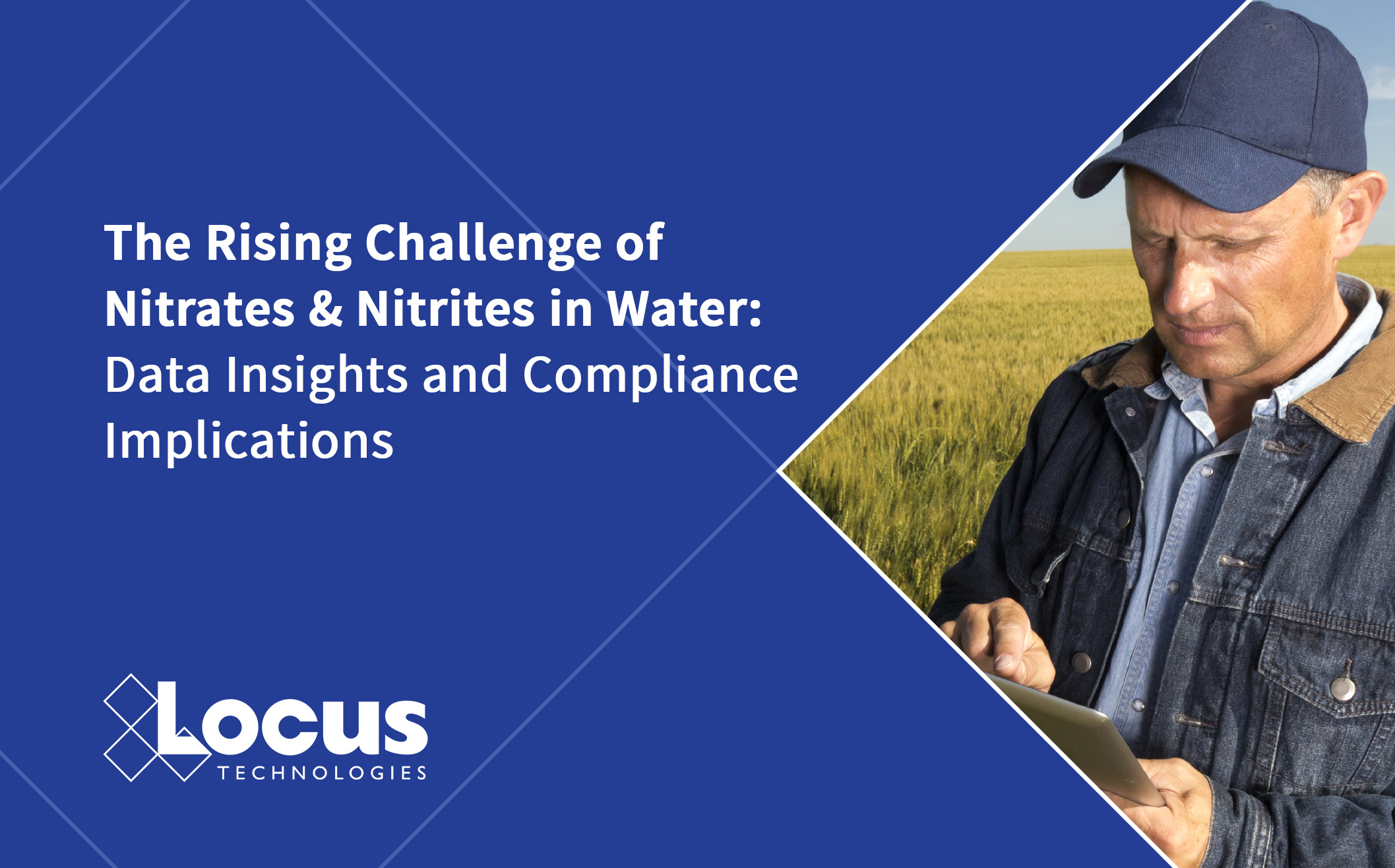When Vendor Rollups Fail: Lessons from Oil & Gas Compliance Software
By Staff Writer

Reading Time: 2 minutes 45 seconds
In terms of environmental compliance, oil and gas companies face some of the most complex reporting and data management challenges anywhere. Air emissions, waste, water, greenhouse gases, and analytical data all require accurate, auditable systems, and in many cases, those systems were built over decades, often in silos.
For one of the world’s largest oil and gas companies, this fragmented history created enormous costs, inefficiencies, and frustration.
The Vendor Sprawl Problem
Like many in the industry, the company initially relied on a patchwork of standalone software products: one for air emissions, another for water, another for waste, etc. Each tool was built on a different architecture, with little ability to share information across domains.
The result was:
- Dispersed data silos across critical compliance functions
- Duplicate effort in reporting and audits
- High licensing costs for multiple products
- Limited visibility into enterprise-wide environmental performance
At its peak, the company was spending an estimated over$100 million annually on this collection of fragmented tools.
Consolidation Without Integration
Over time, corporate mergers and acquisitions rolled these standalone vendors into a single brand. On paper, it looked like progress: one vendor now responsible for all key domains.
In practice, nothing changed.
The acquired products remained disconnected, because they were never designed to work together. Integration required costly redevelopment or migration to a new platform — neither of which materialized. To make it worse, the vendor asked the company to fund part of integration. Despite repeated promises of “one platform,” the oil company’s data stayed scattered across incompatible systems.
The M&A activity solved the vendor’s business problem, but not the customer’s problem. The vendor’s owner and leaders capitalized on the exit strategy to private equity, leaving the software company in the hands of an inexperienced team that was being directed by their investors.
The Cost of Broken Promises
Year after year, the oil company continued to license these legacy products, hoping for the seamless platform they had been sold. Instead, they faced:
- Persistent silos across air, GHG, water, and waste data
- Lost opportunities for cross-domain analysis
- Mounting frustration among internal teams waiting for integration that never came.
It was déjà vu. Years earlier, the company had faced a similar problem with consultants controlling its analytical data. That experience taught them the risks of outsourcing core data ownership, and the costs of waiting on others to deliver.
Choosing a Different Path
This time, the oil company decided to break the cycle. Rather than waiting for another round of promises, they turned to Locus Technologies, a partner that had already proven itself for more than two decades managing their analytical data.
The difference was clear:
- Multitenant, cloud-native architecture built for integration
- Unified applications across waste, water, and analytical data
- Scalable deployments completed in months, not years.
Within six months, Locus Waste software was deployed globally, displacing one of the very products that had failed to integrate after years of attempts. Soon after, Locus Water was added, expanding the company’s unified platform even further.
Lessons for Oil & Gas Leaders
This case highlights a critical truth: “vendor consolidation” is not the same as “product integration”. For oil and gas companies evaluating their compliance stack, it pays to ask hard questions:
- Are these products truly built on the same architecture?
- Can they scale across all my facilities without custom workarounds?
- Does the vendor have a track record of delivering (not just promising) integration?
- Will this system empower my teams with direct access to data, or keep them dependent on outside services?
- Does this software have a version number?
- Is the software deployed on premises and in the cloud?
The Key Takeaway
For this oil and gas giant, the lesson was clear: stop waiting on promises and start building on proof. Vendor rollups may make for neat analyst reports, but without real integration, companies risk locking themselves into high-cost, low-value systems.
By shifting to a platform designed for unification from the start, the company gained not only cost savings but also something far more valuable: confidence that its compliance data will be accessible, adaptable, and future-ready.
Locus is the only self-funded water, air, soil, biological, energy, and waste EHS software company that is still owned and managed by its founder. The brightest minds in environmental science, embodied carbon, CO2 emissions, refrigerants, and PFAS hang their hats at Locus, and they’ve helped us to become a market leader in EHS software. Every client-facing employee at Locus has an advanced degree in science or professional EHS experience, and they incubate new ideas every day – such as how machine learning, AI, blockchain, and the Internet of Things will up the ante for EHS software, ESG, and sustainability.




